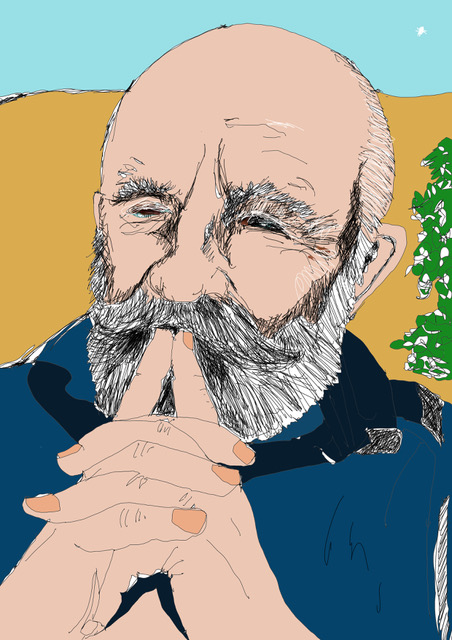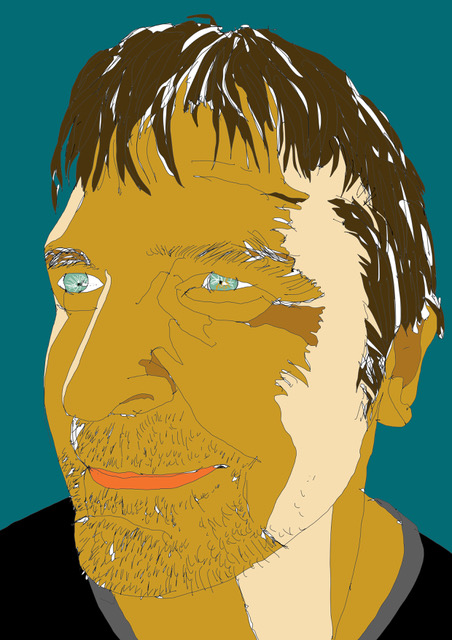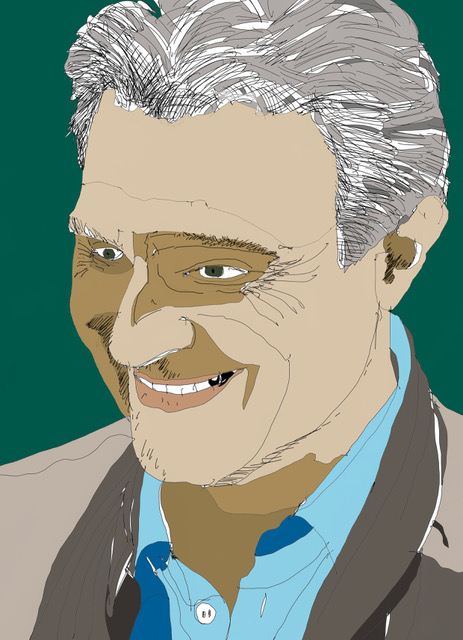Günther Rabl (* 1953, Linz)
Composer and software developer, self-taught on the double bass, participation in improvisation and jazz ensembles (among others with Friedrich Gulda and Ursula Anders). Since 1980 he has turned to tape composition and computer music, numerous works that have been performed at international concerts and festivals. Since 1983 he has been developing software for sound processing and composition.
1990–2007 Lecture “Theory of Electroacoustics” at the University of Music in Vienna. Since 1992 he has been building up his own loudspeaker orchestra for performances and installations. 2000 Founding of his own label canto crudo, publication of his own works as well as archive stocks (Dieter Feichtner, Friedrich Gulda) and rarities on CD.
2010 Foundation of the Electric Orpheus Academy.
FOURIER AUF DER REISE NACH PRAG (1996, stereo, 42 min)
Passersby | Roller | Fourier on his way to Prague
A commission by the wood carver Gerhard Maier for his exhibition of 1000 handmade wooden combs plus a heap of resulting shavings. Artificial reverb has been known and widely used in the studio technics for many years. I was never interested in it. I rather saw it as sort of audio-cosmetics than as a formal method. Not before the emerging of faster computers, another perspective on reverb became possible. What, if any sound may serve as reverbration? What happens, when reverbration can last for minutes or doesn’t end at all? This pieces gives different answers to such questions. It begins with a parody on the morning-traffic on a cross-country road and ends up with the screaming of two million frequencies evoked by a few roaring glissandi.
FAREWELL TEMPERED PIANO (1992, stereo, 42 min)
Computer Music, a commission for the Austrian Pavilion at the EXPO ’92 in Seville.
“This collection of short music pieces is dedicated to the real musicians all over the world. May it encourage them to reflect once more upon their own inner moods and rhythms – beyond a coarse Baroque pitch grid that dominates the entire occidental music world today because of a mindless comfort.”
GROSSE FUGE (1994, 8-channel, 41 min)
On a laminar sound generator (e.g., a metal plate, a gong or a tam-tam), a trained musician can create hundreds of different tones and sounds with a violin bow. The Great Fugue is based on such a model; the difference, however, is that a violin bow is not producing the sounds, but rather the rushing of the water again: glassy, metallic, breeze-like, the tones stratify on top of each other, partially floating freely, partially following the pulse of the rushing water. In large, multidimensional waves, increasingly denser layers (at times over 200 voices) are built up by and by, making the overall sound of the surface noticeable.
ETUDE IN GRAU (1979/2005, 10-channel, 30 min)
Etude in grey
A study with filtered noise in 250 subjects based on pairs of opposites like fast/slow, calm/restless, even/uneven.
source: private material from the composer



































